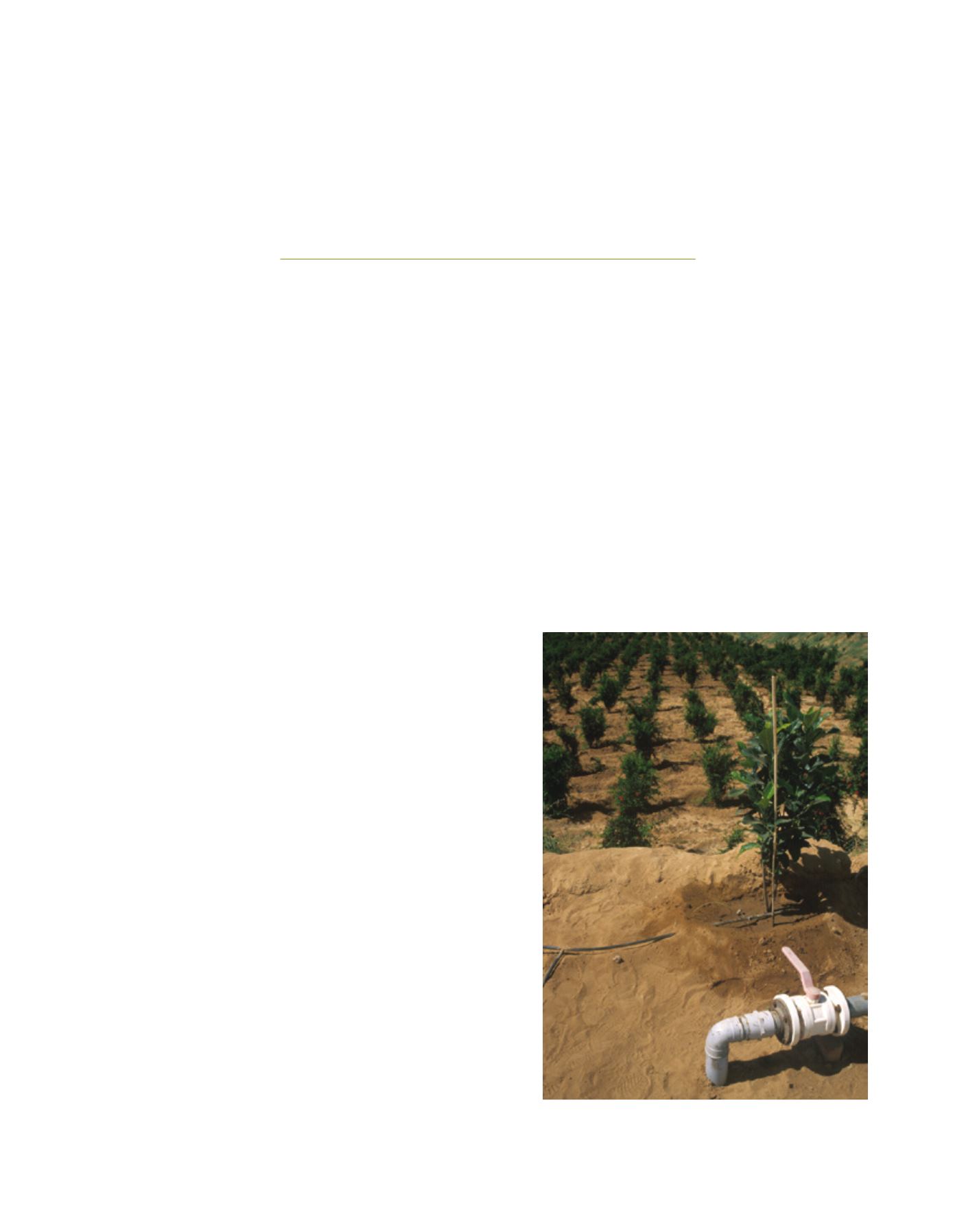

[
] 176
Community benefits achieved through
developing legal frameworks at domestic
and transboundary levels
Stefano Burchi, Chairman, Executive Council, International Association for Water Law
W
ater resources are found above and below the land
surface. Thus, water is almost instinctively associ-
ated with land ownership. Groundwater in particular
has long been associated with private property, with landown-
ers claiming the freedom to pump as much water as they please
under the legal ‘rule of capture’, regardless of the effects on
resource stocks and on their neighbours.
Although the rule of capture can be said to invite indiscriminate
water pumping, it is possible to limit its destructive potential. For
example, although the rule of capture prevails in the state of Texas,
United States, state water legislation also provides for the creation
of groundwater conservation districts with a mandate to protect
groundwater from indiscriminate pumping. This legislation enables
districts to set spacing requirements for wells, production limitations
and production fees. Many districts above the giant Ogallala aquifer
have adopted spacing requirements, while Houston and San Antonio
have set limits on the amount of groundwater that can be extracted
from each well. The Harris-Galveston Coastal Subsidence District
has opted for a fee schedule aimed at discouraging groundwater
pumping. And in Northern Texas, the High Plains Underground
Water Conservation District has implemented a successful overdraft
management approach based on education and the promotion of
conservation technologies.
1
In each case, water laws enabling and
empowering groundwater conservation districts are enabling local
communities to benefit from sustainable groundwater withdrawals
from relevant aquifers.
India has also experienced serious groundwater over-extraction
problems, precipitated and made increasingly worse by the same
legal rule of capture that prevails in Texas. In response to the threat
posed by indiscriminate groundwater pumping, the state of Punjab
passed legislation in 2009 restricting the timing of paddy nursery
sowing and paddy transplanting by farmers. All farmers, whether
they are owners, tenants or share croppers engaging in agriculture,
horticulture, agroforestry or similar economic activities, face severe
fines if they breach the restrictions. This simple and straightforward
measure has had an impact, with farmers responding well to the
new regulations.
A different basic water law prevails in Spain, where groundwa-
ter is public property. Nonetheless, it is reckoned that there is a
lot of illegal water pumping in the country. Like Texas, Spain has
responded to the problem with legislation that provides for the
formation of groundwater user associations which are empowered to
monitor and police pumping restrictions. For example, in 1997 the
groundwater users’ association of the Mancha Oriental
aquifer and the local basin authority agreed not to allow
any new water users until all existing users held proper
groundwater extraction rights. Since then, the associa-
tion has been proactive in monitoring and reporting all
illegal groundwater use.
2
The success of the Mancha
Oriental groundwater users’ association in ensuring
sustainable water withdrawals from the aquifer can be
attributed to the legislation that enables this type of
association to exist and to function, and provides them
with the power needed to accomplish their goals.
Many laws on water resources provide mechanisms
and opportunities for the public and for local communi-
L
egal
F
ramework
at
the
N
ational
/I
nternational
L
evel
Water legislation can help to limit the destructive potential of
indiscriminate groundwater pumping
Image: Int. Assoc. for Water Law


















